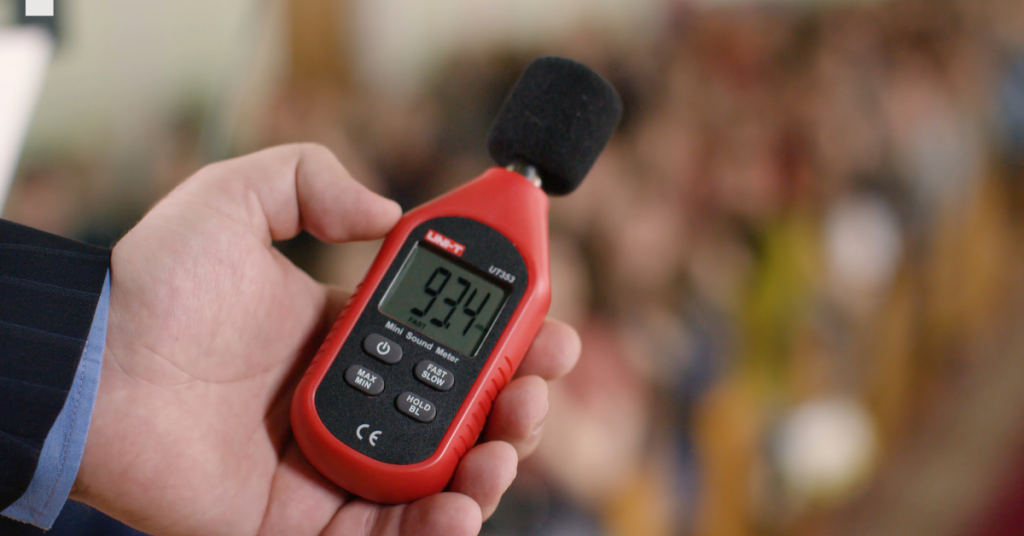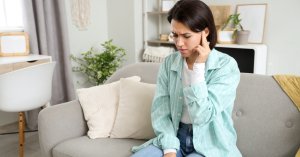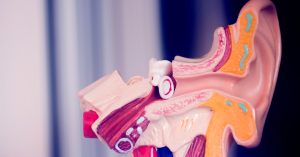Noise is a part of everyday life—whether it’s traffic on your morning commute, the hum of appliances at home, or music streaming through your headphones. But how loud is too loud? And when does everyday sound cross the line into a danger zone for your hearing?
Understanding sound levels, particularly measured in decibels (dB), is crucial for preserving hearing health. As we age, our ears become more vulnerable to damage from prolonged or intense noise exposure. Unfortunately, many people are unaware of how quickly loud environments can cause irreversible hearing loss. That’s why knowing what constitutes a “safe” noise level can make all the difference.
This guide is designed to demystify decibel levels and help you identify when you’re in a potentially harmful sound environment. From recognizing risky noise levels in everyday situations to learning how long you can safely be exposed to certain sounds, we’ll equip you with practical knowledge and tools to protect your hearing for the long haul.
Whether you’re concerned about your own hearing or that of a loved one, especially if you’re over 50 or care for someone who is, this article will give you the information you need to make informed decisions about noise exposure. Let’s begin by understanding what decibels actually are and why they matter so much when it comes to your ears.
What Are Decibels and Why Do They Matter?
To understand how sound affects your hearing, you first need to understand decibels. A decibel (dB) is the unit used to measure the intensity of sound. But it’s not a straightforward, linear scale—it’s logarithmic, meaning that every increase of 10 dB represents a tenfold increase in sound intensity. For example, a sound at 70 dB is ten times more intense than one at 60 dB, and 100 times more intense than 50 dB. This rapid increase explains why sounds can go from safe to dangerous much faster than people expect.
The human ear is incredibly sensitive. It can hear everything from a whisper at 30 dB to the roar of a jet engine at 120 dB or more. However, just because your ears can hear these sounds doesn’t mean they should —especially for long periods.
So why do decibels matter for your health? Exposure to sounds above 85 dB over time can lead to noise-induced hearing loss (NIHL), a type of permanent hearing damage. This kind of hearing loss doesn’t happen all at once. It builds gradually, often without noticeable symptoms until significant damage has occurred. And unlike some other medical conditions, once your hearing is gone, it’s usually gone for good.
Another key reason to understand decibels is that the damage risk doubles with every increase of about 3 dB. This means a sound at 88 dB can cause as much damage in half the time as one at 85 dB. It’s not just about how loud a sound is—it’s also about how long you’re exposed to it.
Whether you’re attending a concert, working with power tools, or using headphones, being able to identify sound levels and understand their implications is vital. Thankfully, there are tools—like smartphone decibel meter apps and sound level meters—that can help you measure your environment and make smart choices to protect your ears.
Safe vs. Dangerous Noise Levels: The Decibel Breakdown
Knowing how to interpret decibel levels is one thing—but understanding what those levels actually mean for your hearing health is another. Let’s break down the spectrum of common sound levels, from whisper-quiet to dangerously loud, and what each range implies in terms of safety.
Safe Sound Levels (Below 70 dB)
Sounds under 70 dB are generally considered safe, even with prolonged exposure. These are the background noises of everyday life that pose no real risk to your hearing.
- 30 dB – A quiet library
- 40 dB – Light rainfall
- 50 dB – A refrigerator humming
- 60 dB – Normal conversation
- 70 dB – Washing machine or dishwasher
Caution Zone (70–85 dB)
This range is the gray area. Prolonged exposure without protection can start to damage hearing over time, especially for sensitive individuals or those with pre-existing hearing loss.
- 72 dB – City traffic noise (from inside a car)
- 75 dB – Vacuum cleaner
- 80 dB – Busy restaurant or alarm clock
- 85 dB – Gas-powered lawnmower, heavy city traffic
Danger Zone (Over 85 dB)
Sounds above 85 dB can begin to damage hearing quickly. The higher the volume, the less time it takes for damage to occur.
- 90 dB – Power tools, shouted conversation
- 95 dB – Motorcycle or subway train
- 100 dB – Live concert or sporting event
- 110 dB – Chainsaw, rock concert
- 120 dB+ – Jet engine at takeoff, emergency siren, fireworks
Understanding Individual Sensitivity
It’s important to remember that not everyone is affected the same way. Age, genetics, existing hearing conditions, and overall health can make some people more susceptible to hearing loss than others. Even if a sound doesn’t seem loud to you, it could still be doing damage—especially with repeated exposure.
How Long Is Too Long? Duration and Decibel Exposure
When it comes to protecting your hearing, volume isn’t the only factor—time matters just as much. The louder a sound is, the less time it takes to cause damage. Even moderately loud noises can be harmful if you’re exposed for too long. That’s why understanding both decibel levels and exposure duration is essential for hearing health.
The Time-Intensity Trade-Off
Here’s a simplified breakdown of how long you can be safely exposed to various decibel levels without hearing protection:
| Decibel Level | Maximum Safe Exposure Time |
|---|---|
| 85 dB | 8 hours |
| 88 dB | 4 hours |
| 91 dB | 2 hours |
| 94 dB | 1 hour |
| 97 dB | 30 minutes |
| 100 dB | 15 minutes |
| 103 dB | 7.5 minutes |
| 106 dB | <4 minutes |
| 110 dB | <2 minutes |
| 115 dB | <30 seconds |
Chronic vs. Sudden Exposure
- Sudden exposure (like fireworks or gunfire) can cause immediate and irreversible damage to the inner ear.
- Chronic exposure (like daily headphone use at high volumes) gradually wears down the delicate structures in the ear.
Noise-Induced Hearing Loss Is Preventable
Noise-induced hearing loss (NIHL) is 100% preventable. By monitoring how loud your environment is and how long you’re exposed, you can take simple steps to keep your ears safe.
Everyday Situations That May Put Your Hearing at Risk
Many people assume that hearing loss only comes from obvious sources like concerts or construction sites. But in reality, some of the most harmful noise exposures happen during everyday activities.
Household Noise Culprits
- Hair dryers: 80–90 dB
- Vacuum cleaners: 70–85 dB
- Blenders and food processors: 90 dB+
- Power tools: Frequent use without protection is risky
Personal Audio Devices
- Listening at full volume can exceed 100 dB
- Use the 60/60 rule: No more than 60% volume for 60 minutes
- Noise-canceling headphones can reduce the need to turn up the volume
Commuting and Public Spaces
- Subway trains: 90–95 dB
- Buses and trains: 80–90 dB
- Airplanes during takeoff: Up to 105 dB
Recreational Risks
- Live music venues and clubs: 100–110 dB
- Sporting events: 120 dB+
- Home theaters or gaming: Prolonged use at high volume is harmful
Protecting Your Ears: Tips for Managing Noise Exposure
1. Use Hearing Protection
- Foam earplugs, high-fidelity earplugs, or earmuffs can reduce harmful exposure.
2. Monitor Sound Levels with Technology
- Use smartphone apps like NIOSH Sound Level Meter or Decibel X
3. Set Volume Limits on Devices
- Many devices allow you to cap maximum volume
- Take regular breaks from headphone use
4. Create Quieter Spaces at Home
- Use carpets or curtains to absorb sound
- Choose quieter appliances
5. Prioritize Quiet Breaks
- Schedule time away from noise each day to allow your ears to rest
Conclusion
Hearing is one of our most valuable senses, and yet, it’s often one of the least protected. Every day, we’re surrounded by sounds that can either be harmless or harmful—depending on their decibel level and the length of exposure.
The key takeaway? Awareness is your best defense. Understanding how loud is too loud, recognizing risky environments, and adopting simple protective strategies can make all the difference.
Noise-induced hearing loss is 100% preventable. But prevention starts with knowledge—and now, you have the tools to make smart, sound-safe decisions.
FAQ
What is a safe decibel level for daily noise exposure?
Generally, any sound below 70 dB is considered safe for prolonged exposure.
Can short bursts of loud noise cause hearing loss?
Yes. Sudden, intense sounds like gunshots, fireworks, or explosions can cause immediate and permanent hearing loss.
How can I measure the noise level around me?
Use smartphone apps like NIOSH Sound Level Meter or Decibel X. For more precision, handheld decibel meters are available.
Are headphones and earbuds equally damaging to hearing?
Earbuds are more likely to cause damage at lower volumes than over-ear headphones. Regardless, long-term use at high volumes is risky.
What are signs that noise may be damaging my hearing?
Tinnitus, muffled sounds, difficulty hearing conversations, or needing to increase volume frequently.
This article is for informational purposes only and is not a substitute for professional medical advice, diagnosis, or treatment. If you are concerned about your hearing or ear health, please consult a qualified healthcare provider.






